Abstract
The histopathology of rat lung after exposure to high concentrations of mixed oxides of nitrogen (NOx) has been studied. Considerable damage was observed, which initially took the form of 'thickening' and 'blebbing' of the alveolar epithelium and disruption of type II pneumocytes. These early changes were attributed to the direct effect of the oxidant action of NOx. There then followed a latent period of approximately 6 h after which the development of oedema of the interstitium and alveolar septum was observed. Clinical observations and the results from light and electron microscopical examination suggested that the lung damage caused by exposure to 518 parts/10(6) NOx for 5 min was greater than that caused by 1435 parts/10(6) for 1 min. This was not supported by the findings from light microscopy where similar damage was observed at both dose levels. These results suggest that such exposures might pose a risk of lung damage to man.
Full text
PDF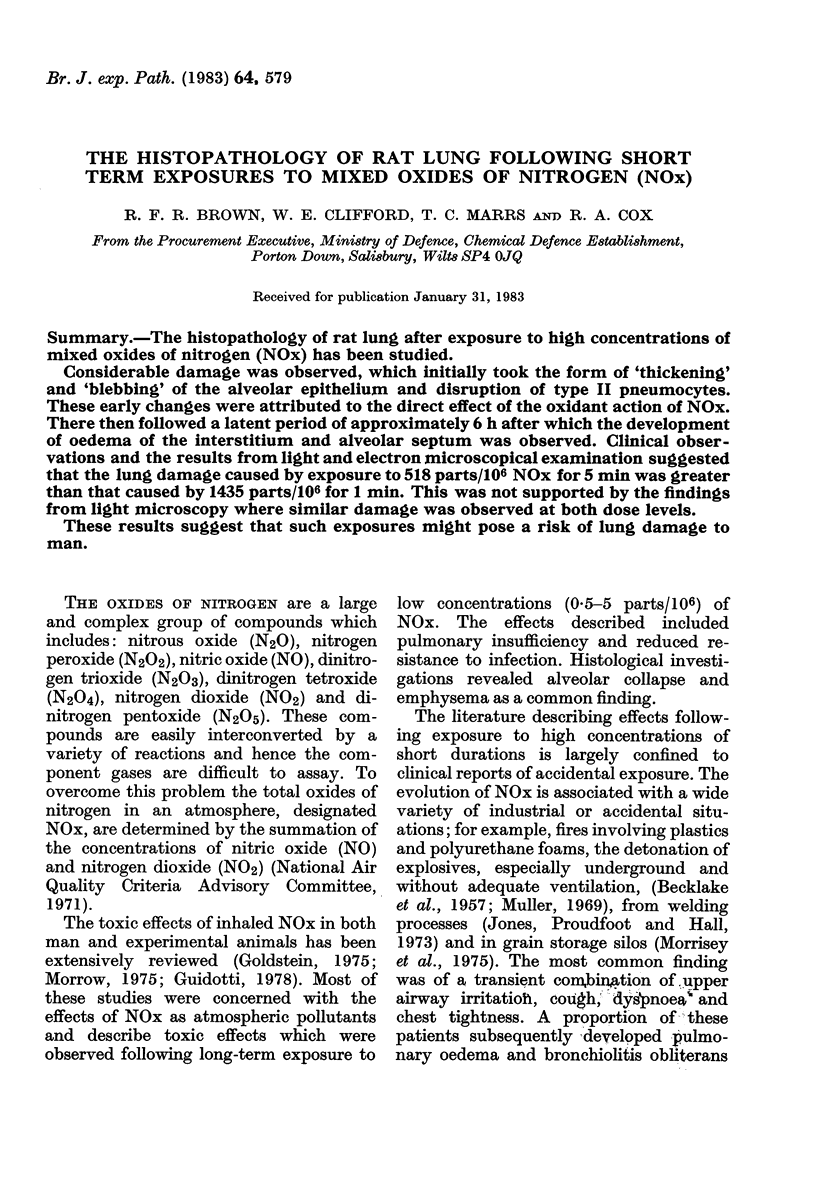
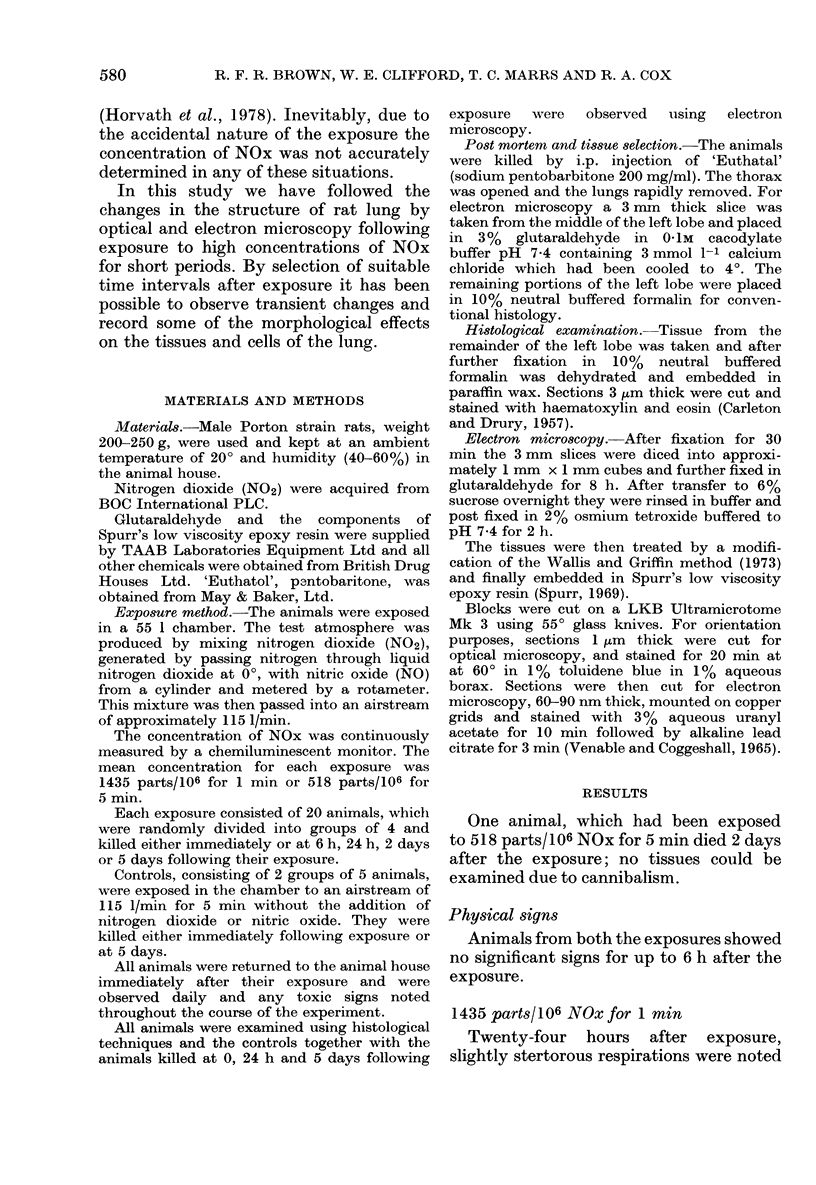
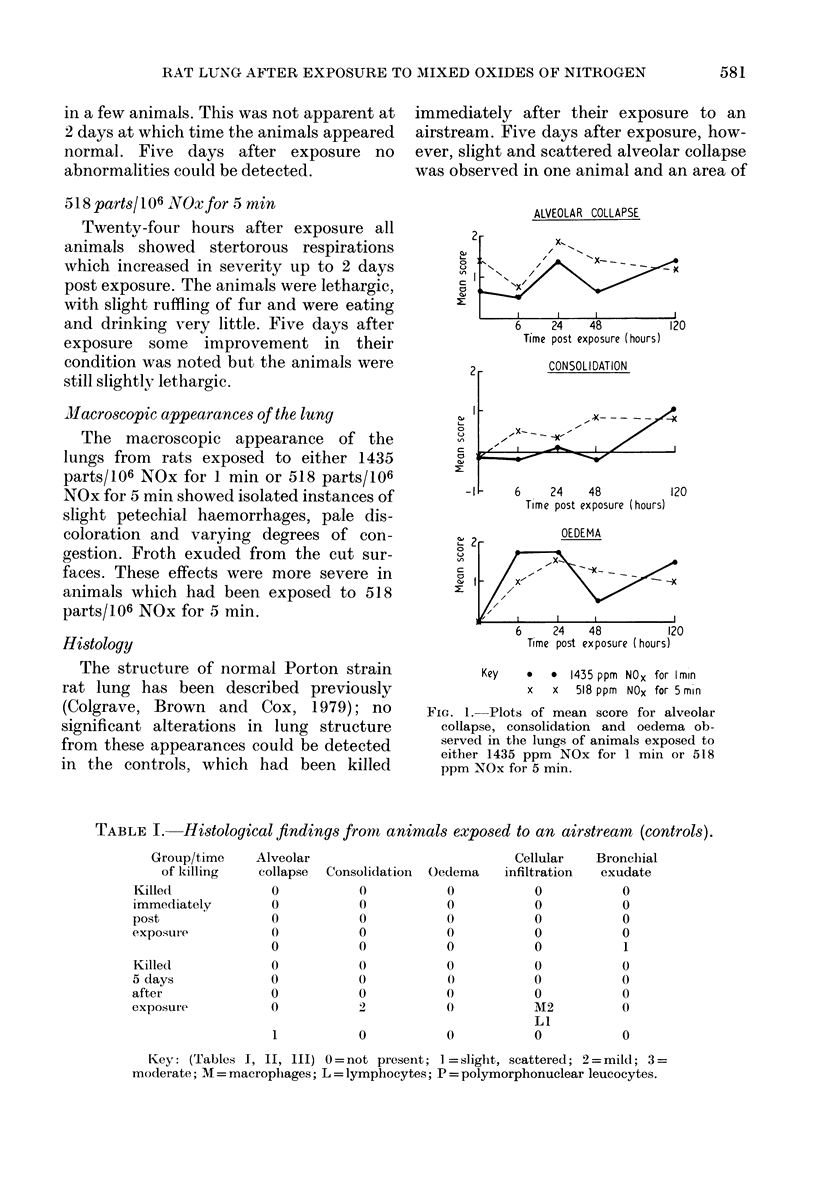
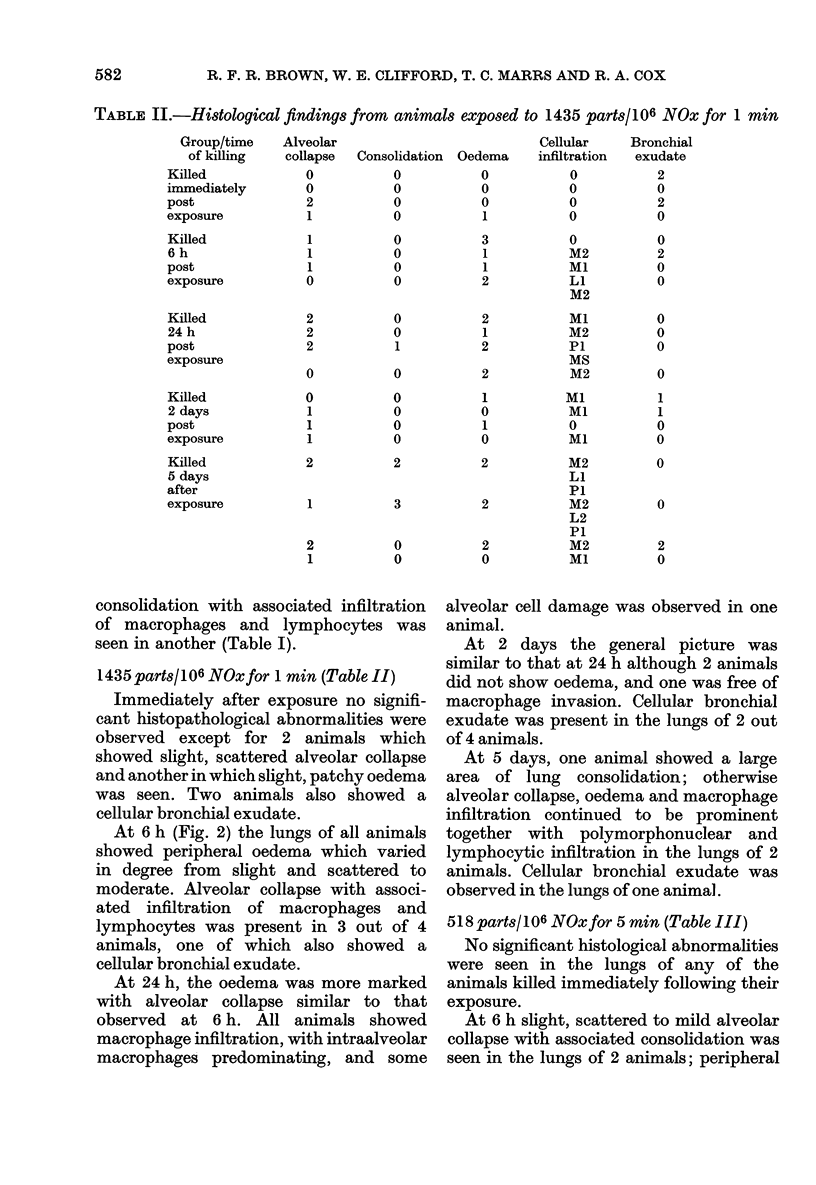
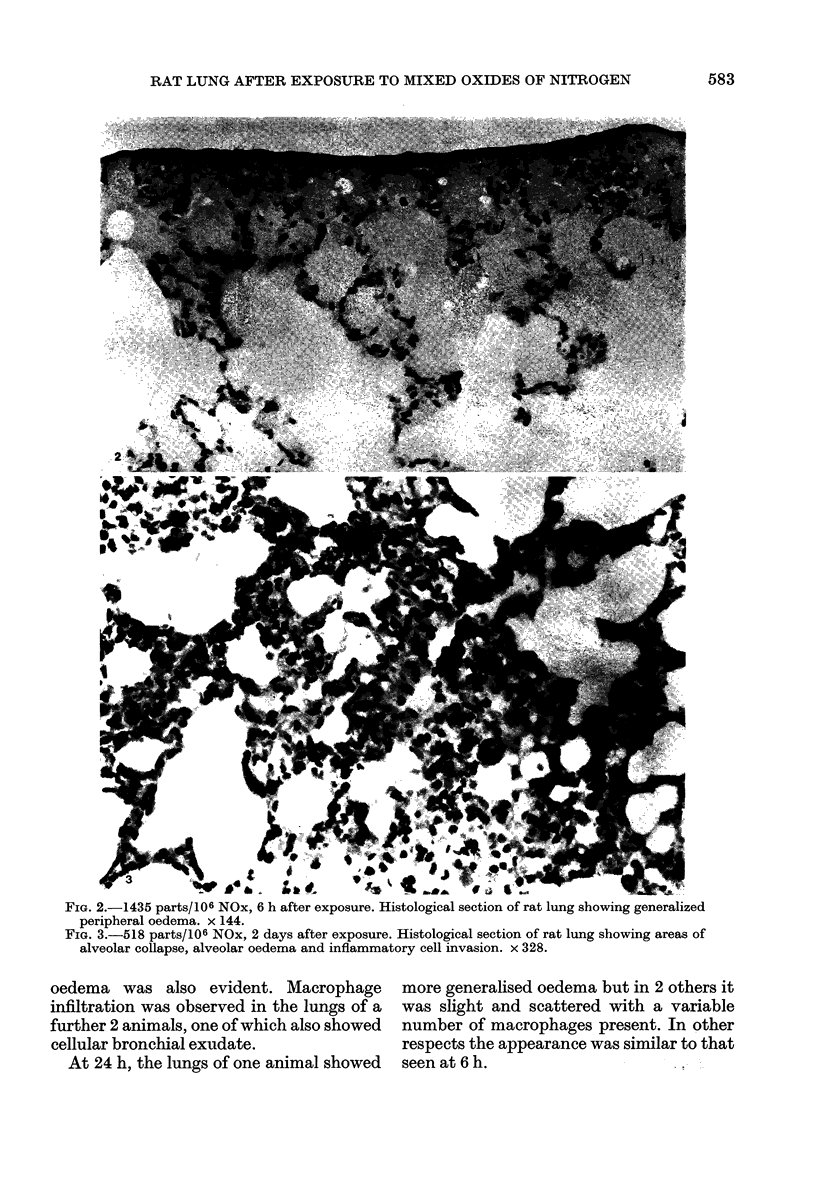
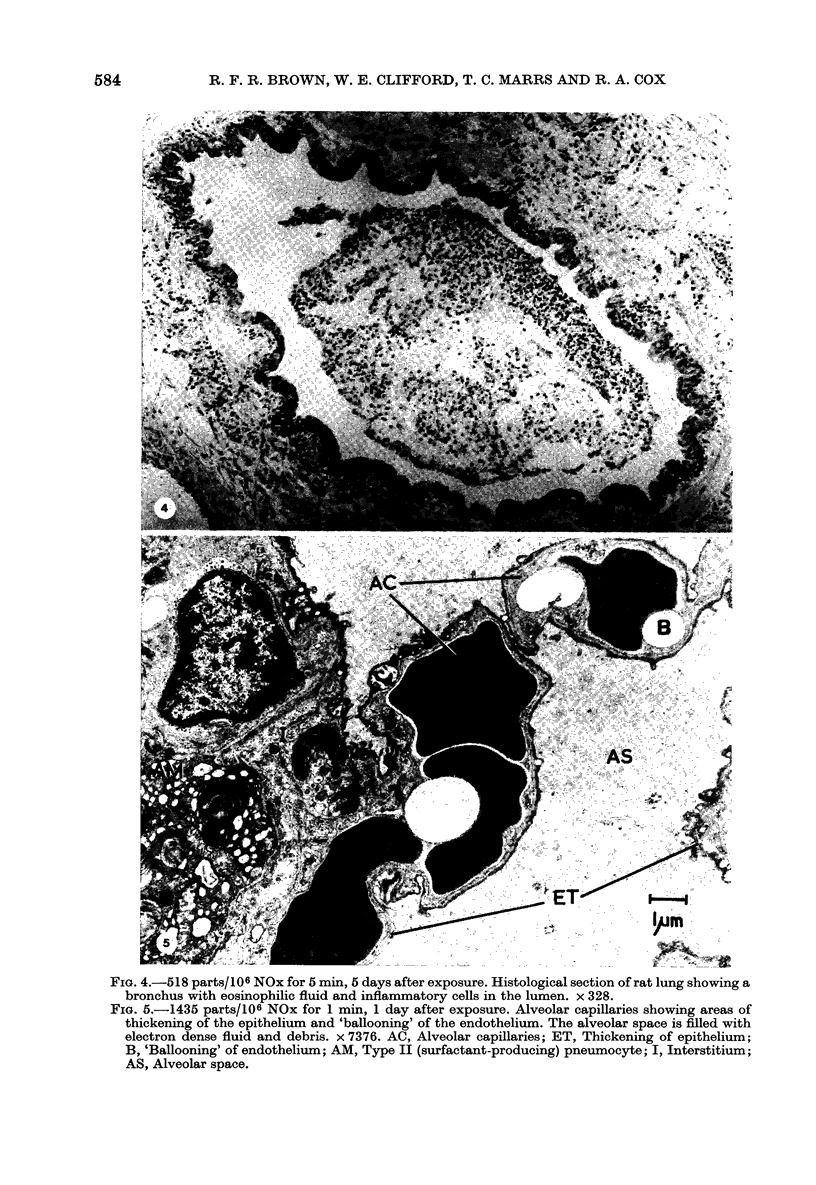
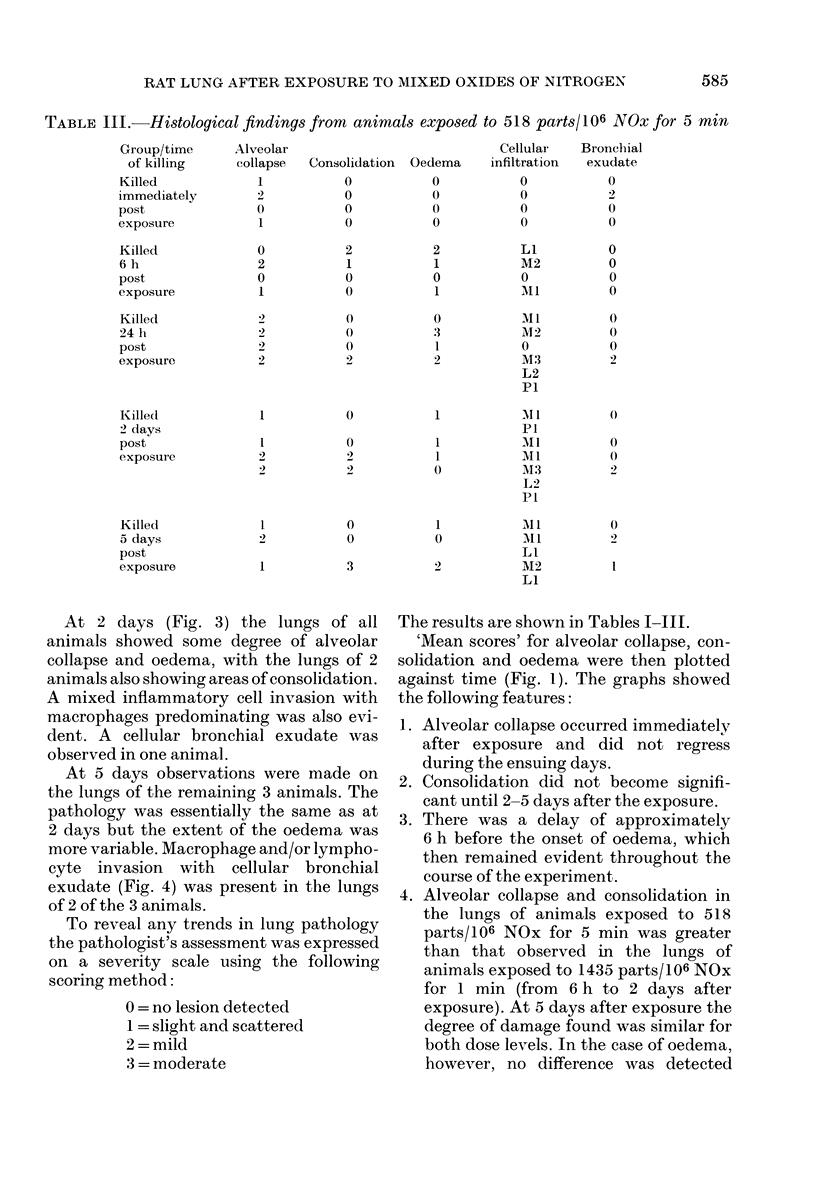
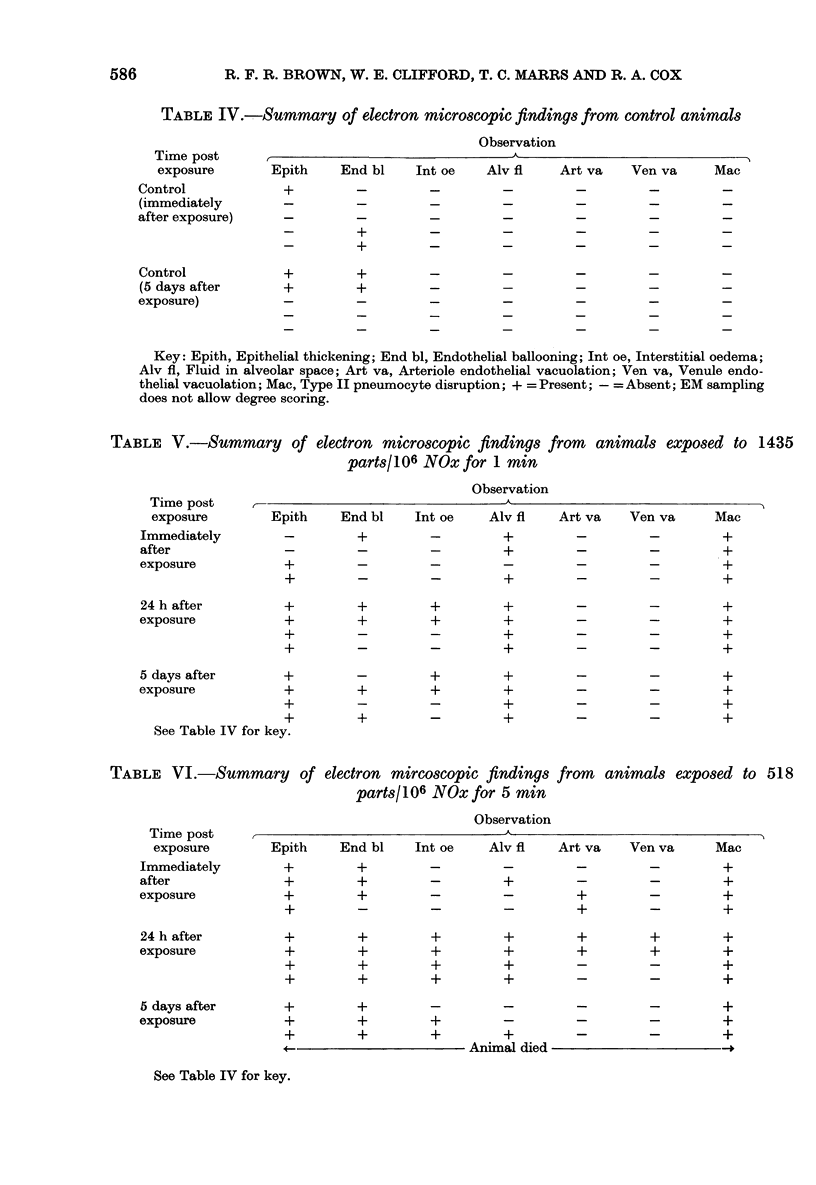
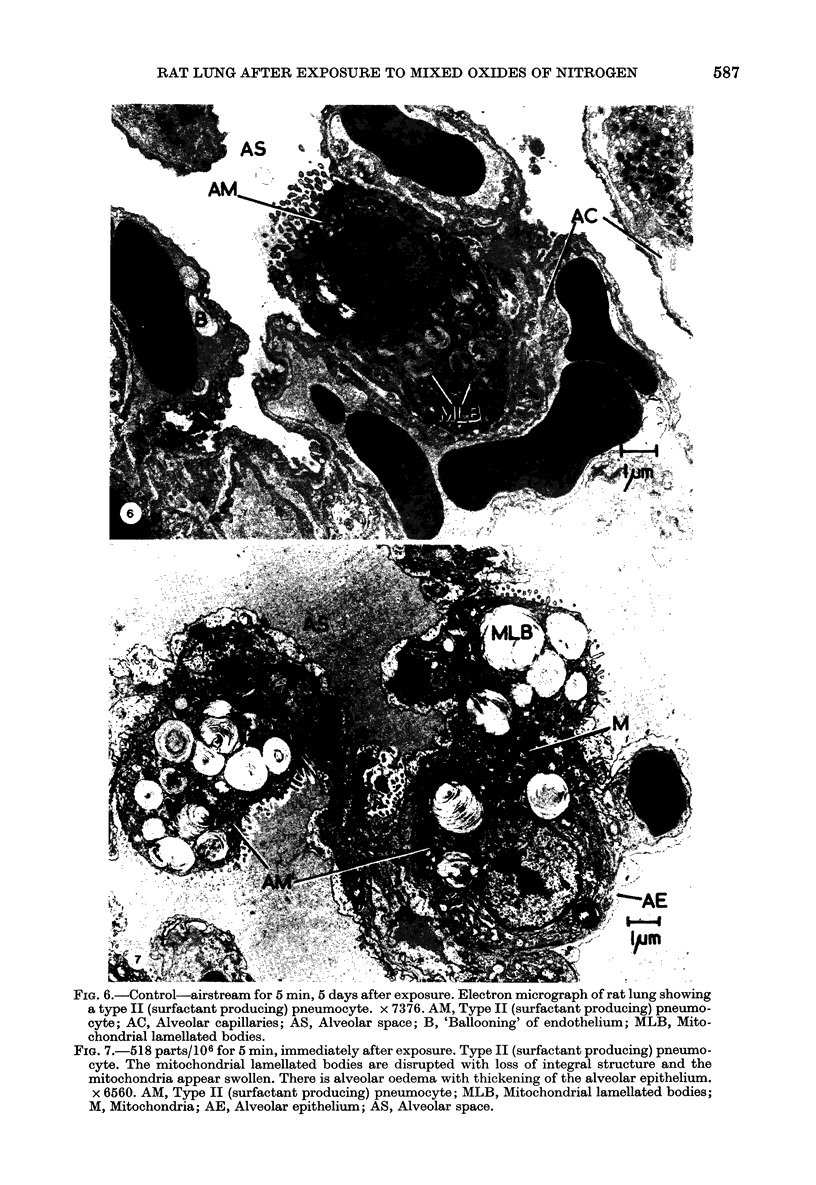
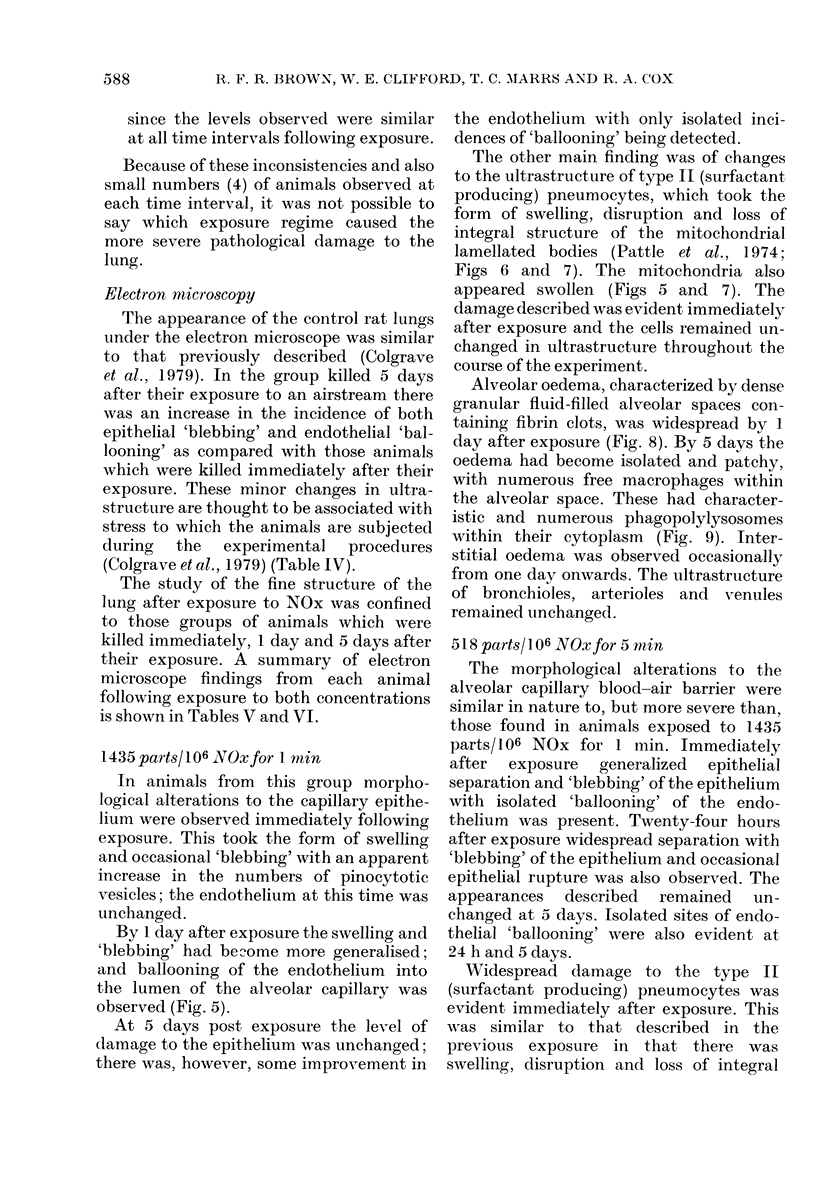
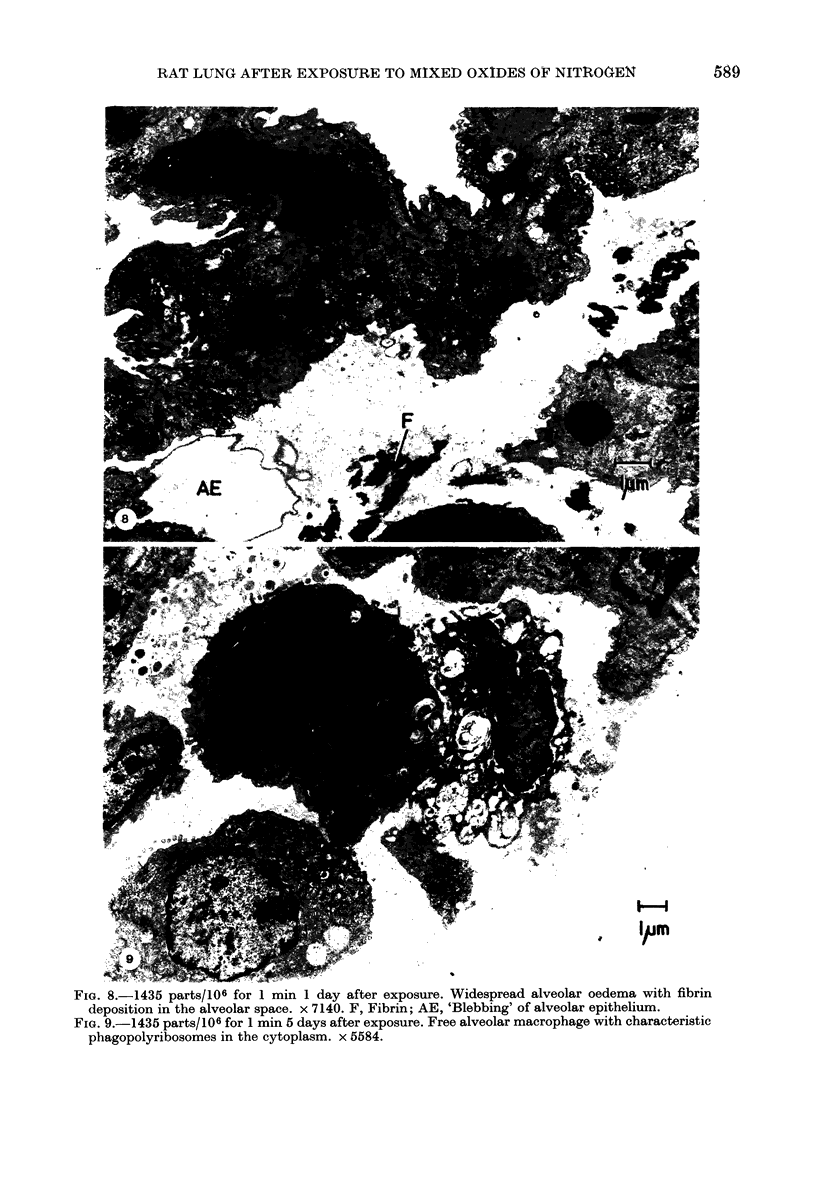
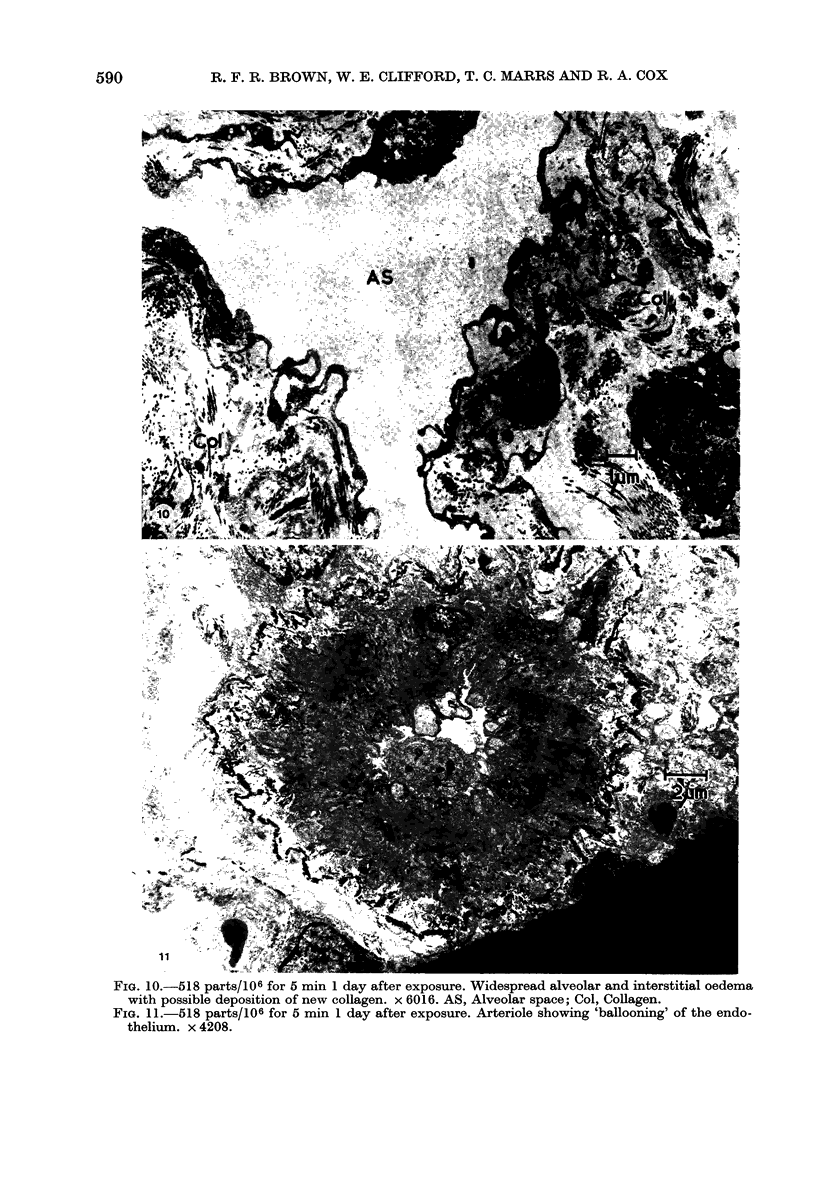
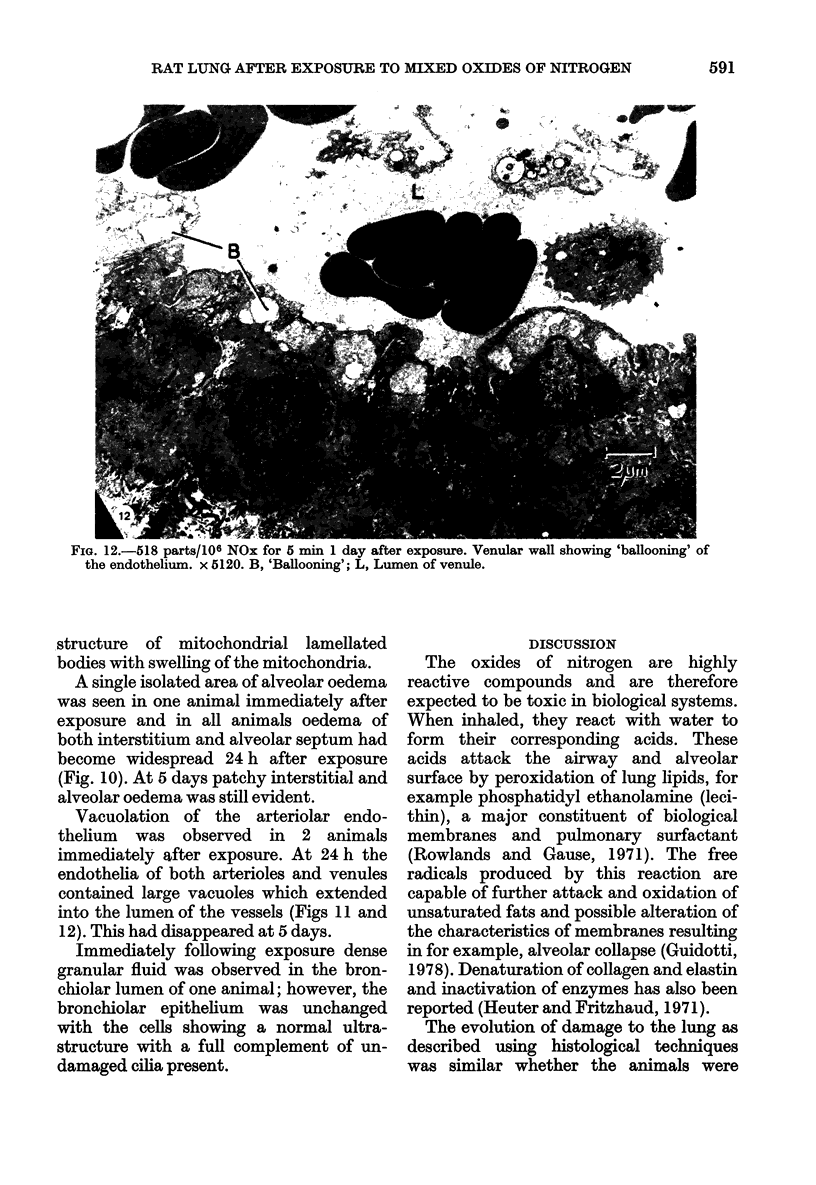
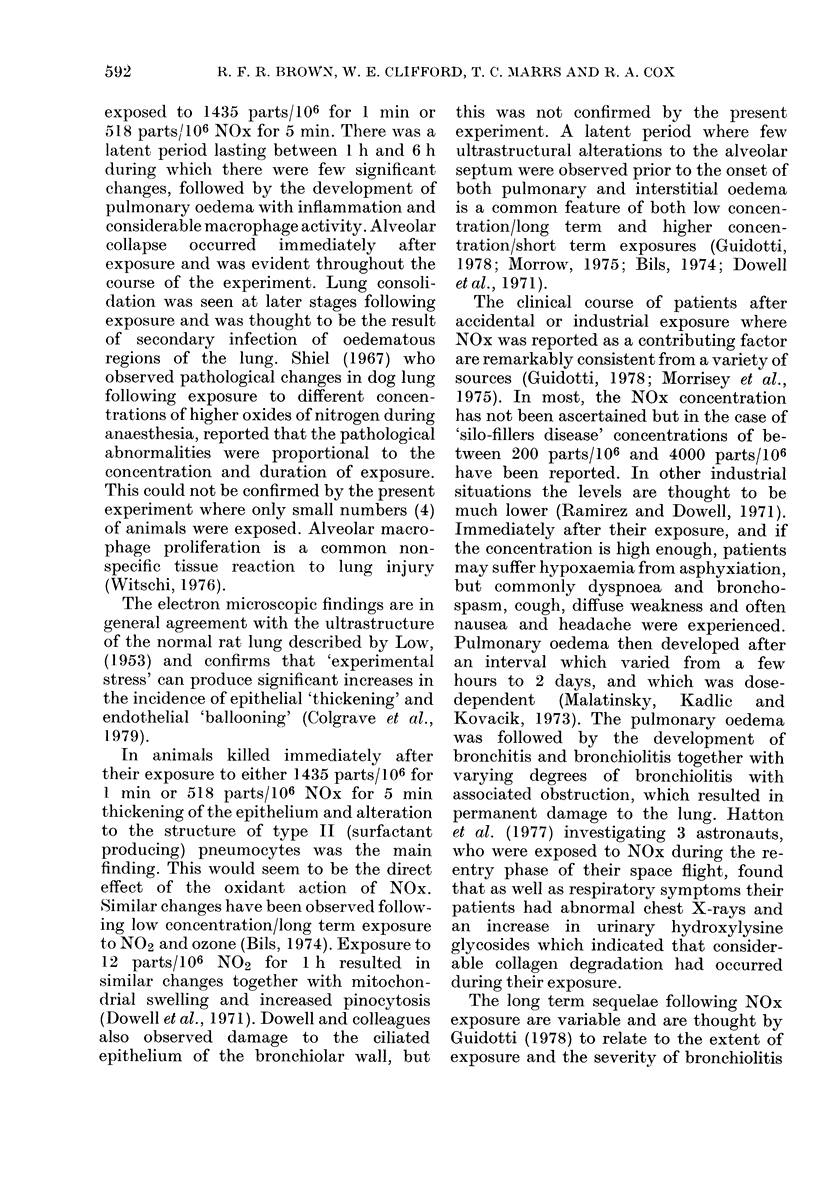
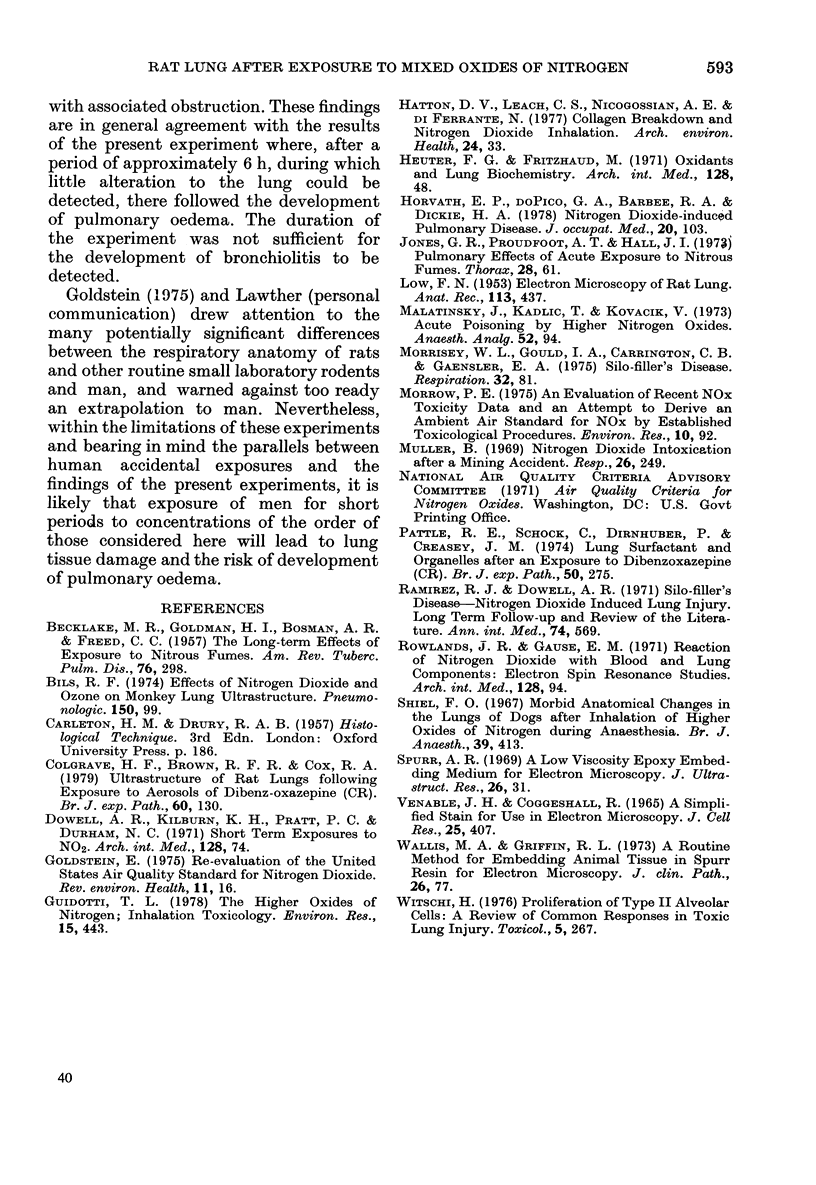
Images in this article
Selected References
These references are in PubMed. This may not be the complete list of references from this article.
- Bils R. F. Effects of nitrogen dioxide and ozone on monkey lung ultrastructure. Pneumonologie. 1974;150(2-4):99–111. doi: 10.1007/BF02179307. [DOI] [PubMed] [Google Scholar]
- Colgrave H. F., Brown R. F., Cox R. A. Ultrastructure of rat lungs following exposure to aerosols of dibenzoxazepine (CR). Br J Exp Pathol. 1979 Apr;60(2):130–141. [PMC free article] [PubMed] [Google Scholar]
- Dowell A. R., Kilburn K. H., Pratt P. C. Short-term exposure to nitrogen dioxide. Effects on pulmonary ultrastructure, compliance, and the surfactant system. Arch Intern Med. 1971 Jul;128(1):74–80. [PubMed] [Google Scholar]
- Guidotti T. L. The higher oxides of nitrogen: inhalation toxicology. Environ Res. 1978 Jun;15(3):443–472. doi: 10.1016/0013-9351(78)90125-1. [DOI] [PubMed] [Google Scholar]
- Hatton D. V., Leach C. S., Nicogossian A. E. Collagen breakdown and nitrogen dioxide inhalation. Arch Environ Health. 1977 Jan-Feb;32(1):33–36. doi: 10.1080/00039896.1977.10667250. [DOI] [PubMed] [Google Scholar]
- Horvath E. P., doPico G. A., Barbee R. A., Dickie H. A. Nitrogen dioxide-induced pulmonary disease: five new cases and a review of the leterature. J Occup Med. 1978 Feb;20(2):103–110. [PubMed] [Google Scholar]
- Jones G. R., Proudfoot A. T., Hall J. I. Pulmonary effects of acute exposure to nitrous fumes. Thorax. 1973 Jan;28(1):61–65. doi: 10.1136/thx.28.1.61. [DOI] [PMC free article] [PubMed] [Google Scholar]
- LOW F. N. Electron microscopy of the rat lung. Anat Rec. 1952 Aug;113(4):437–449. doi: 10.1002/ar.1091130406. [DOI] [PubMed] [Google Scholar]
- Malatinský J., Kadlic T., Kovácik V. Acute poisoning by higher nitrogen oxides. Anesth Analg. 1973 Jan-Feb;52(1):94–99. [PubMed] [Google Scholar]
- Morrissey W. L., Gould I. A., Carrington C. B., Gaensler E. A. Silo-Filler's disease. Respiration. 1975;32(1):81–92. doi: 10.1159/000193638. [DOI] [PubMed] [Google Scholar]
- Morrow P. E. An evaluation of recent NOx toxicity data and an attempt to derive an ambient air standard for NOx by established toxicological procedures. Environ Res. 1975 Aug;10(1):92–112. doi: 10.1016/0013-9351(75)90076-6. [DOI] [PubMed] [Google Scholar]
- Müller B. Nitrogen dioxide intoxication after a mining accident. Respiration. 1969;26(4):249–261. doi: 10.1159/000192610. [DOI] [PubMed] [Google Scholar]
- Ramirez J., Dowell A. R. Silo-filler's disease: nitrogen dioxide-induced lung injury. Long-term follow-up and review of the literature. Ann Intern Med. 1971 Apr;74(4):569–576. doi: 10.7326/0003-4819-74-4-569. [DOI] [PubMed] [Google Scholar]
- Rowlands J. R., Gause E. M. Reaction of nitrogen dioxide with blood and lung components. Electron spin resonance studies. Arch Intern Med. 1971 Jul;128(1):94–100. [PubMed] [Google Scholar]
- Shiel F. O. Morbid anatomical changes in the lungs of dogs after inhalation of higher oxides of nitrogen during anaesthesia. Br J Anaesth. 1967 May;39(5):413–424. doi: 10.1093/bja/39.5.413. [DOI] [PubMed] [Google Scholar]
- Spurr A. R. A low-viscosity epoxy resin embedding medium for electron microscopy. J Ultrastruct Res. 1969 Jan;26(1):31–43. doi: 10.1016/s0022-5320(69)90033-1. [DOI] [PubMed] [Google Scholar]
- VENABLE J. H., COGGESHALL R. A SIMPLIFIED LEAD CITRATE STAIN FOR USE IN ELECTRON MICROSCOPY. J Cell Biol. 1965 May;25:407–408. doi: 10.1083/jcb.25.2.407. [DOI] [PMC free article] [PubMed] [Google Scholar]
- Wallis M. A., Griffin R. L. A routine method for embedding animal tissues in Spurr resin for electron microscopy. J Clin Pathol. 1973 Jan;26(1):77–78. doi: 10.1136/jcp.26.1.77. [DOI] [PMC free article] [PubMed] [Google Scholar]













